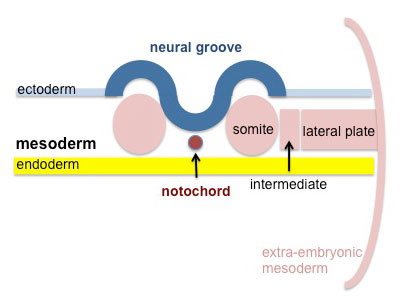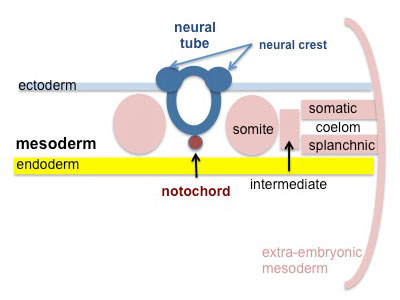Connective Tissue Development
From Embryology
Introduction
Loose and dense connective tissue Reticular connective tissue Adipose Tissue Mesenchymal connective tissue
| System Links: Introduction | Cardiovascular | Coelomic Cavity | Endocrine | Gastrointestinal Tract | Genital | Head | Immune | Integumentary | Musculoskeletal | Neural | Neural Crest | Placenta | Renal | Respiratory | Sensory | Birth |
Some Recent Findings
|
Textbooks
Objectives
Development Overview
Mesoderm Development
References
- ↑ <pubmed>14715917</pubmed>
Reviews
<pubmed>14715917</pubmed>
Articles
Search PubMed
Search Pubmed: connective tissue development | adipose Development | [http://www.ncbi.nlm.nih.gov/sites/entrez?==Additional Images==
Terms
Glossary Links
- Glossary: A | B | C | D | E | F | G | H | I | J | K | L | M | N | O | P | Q | R | S | T | U | V | W | X | Y | Z | Numbers | Symbols | Term Link
Cite this page: Hill, M.A. (2024, May 6) Embryology Connective Tissue Development. Retrieved from https://embryology.med.unsw.edu.au/embryology/index.php/Connective_Tissue_Development
- © Dr Mark Hill 2024, UNSW Embryology ISBN: 978 0 7334 2609 4 - UNSW CRICOS Provider Code No. 00098G



